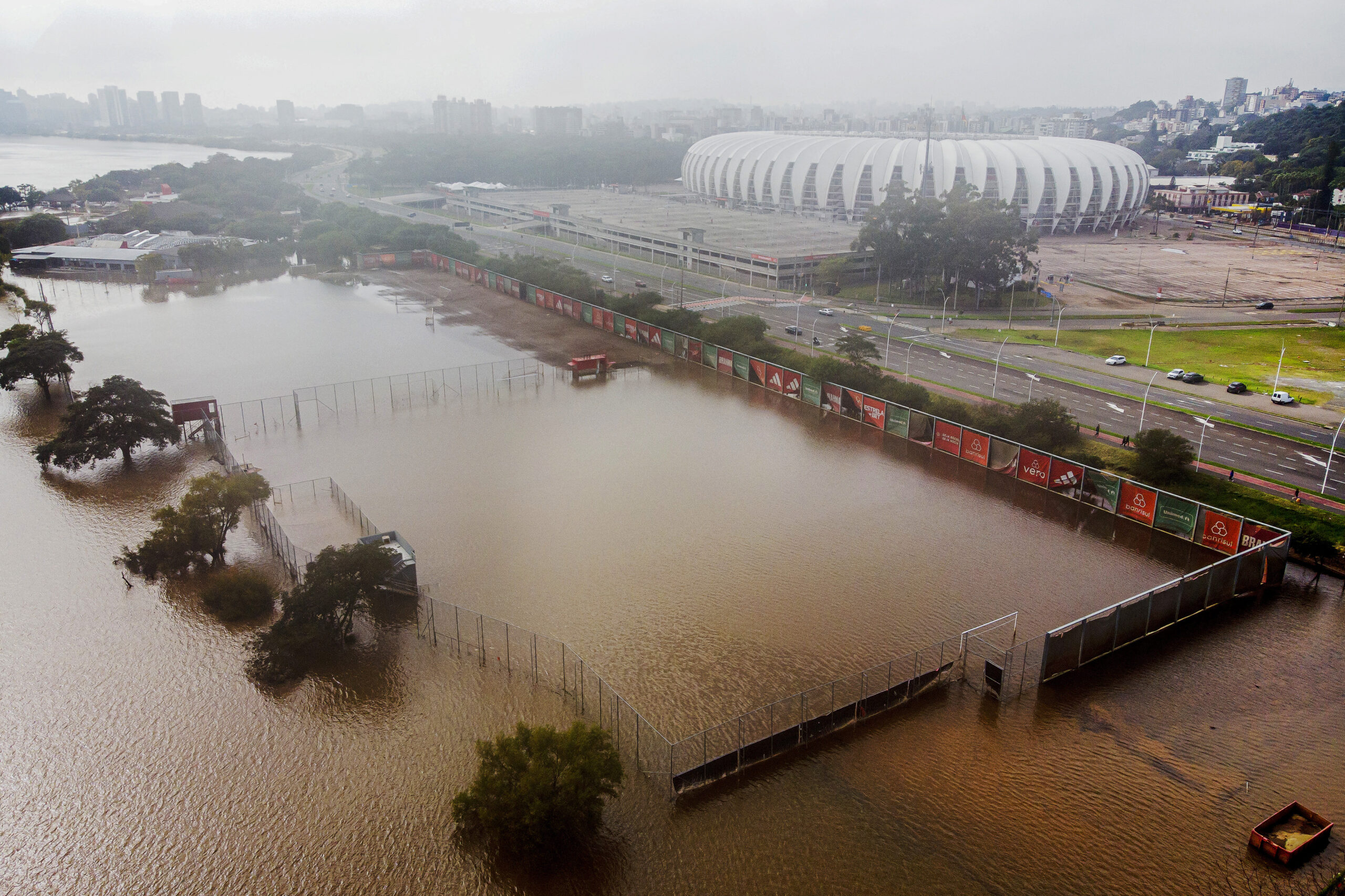
Aerial view of Internacional’s training center next to the Beira Rio stadium in Porto Alegre, Rio Grande do Sul State, Brazil, taken on May 30, 2024. The water and mud have rendered Gremio and Internacional’s stadiums and headquarters inoperable. Without places to train or play football, the Brazilian clubs became itinerant teams to avoid the floods that ravaged southern Brazil. Agence France-Presse
BRASILIA — After torrential rains that sparked historic flooding in southern Brazil, the country expects a swing to severe drought in parts, the environment minister said Wednesday.
Brazil has been battered by a series of extreme weather events, most recently once-in-a-century flooding in the state of Rio Grande do Sul that left 172 people dead.
Environmental Minister Marina Silva said the flooding was due to a mash-up of natural phenomena such as El Nino and climate change, a double-whammy also seen elsewhere.
READ: Brazil flooding death toll surpasses 100
“We have the same thing happening in the Pantanal, the Amazon,” she said, referring to climate extremes in one of the world’s largest tropical wetlands, and its largest rainforest.
She said the northeastern Caatinga — a unique and biodiverse semi-arid biome — was “already experiencing moments of severe drought, and in the case of Rio Grande do Sul we are going to have severe drought.”
Silva, who was speaking at an event with President Luiz Inacio Lula da Silva, warned of more fires after record blazes in the first few months of the year.
READ: Uncertain future for thousands after deadly Brazil floods
A rapid study done by global scientists after the flooding in Rio Grande do Sul determined that climate change made the event twice as likely, with El Nino playing as big a role in the catastrophe.
El Nino, which alters rainfall patterns around the world, making parts more susceptible to torrential showers or drought, is currently weakening.
After a brief neutral period, La Nina — which can lead to drought conditions in parts of Latin America — is expected to return.
A renowned activist in her field, Silva returned to head the environment ministry and oversee Brazil’s climate change policies when Lula returned to power in January 2023.
She had good news for Brazil’s Cerrado region, a vast tropical savanna renowned for its rich biodiversity where deforestation soared 43 percent in 2023 while it halved in the Amazon.
Silva said that between January and May, deforestation had reduced 12.9 percent in the Cerrado but “it is too early to say that this is a lasting inflection in the curve.”

